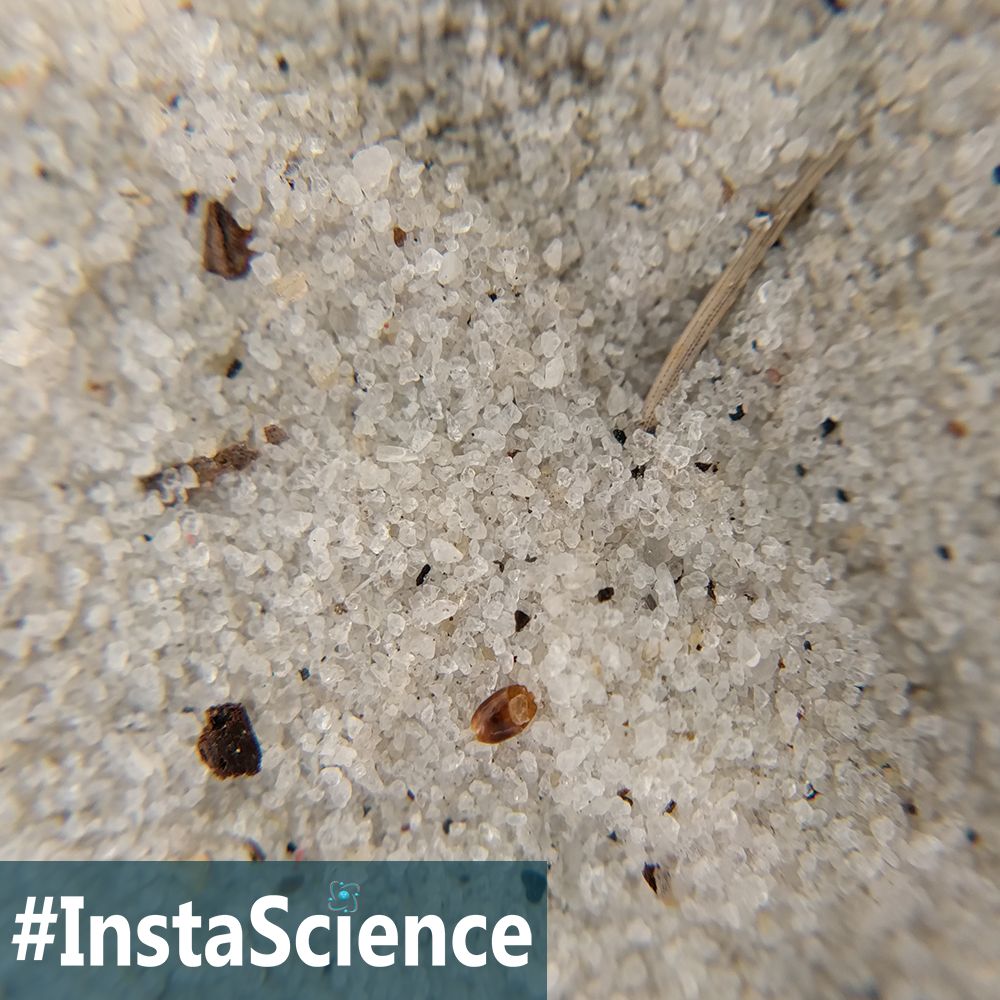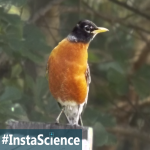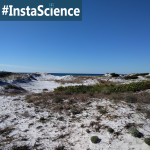
As a mom, I hate the way it sticks to just about everything. And don’t get me started about how sand changes that quick snack you had planned to eat on the beach!
But as a scientist, sand fascinates me. So, today as a part of our month of beach science – I, the scientist-side of me, am going to share with you all about sand.
If you Google “sand images” you will come up with a huge variety of pictures, some sand is fine-grained and white, while other sand is coarse – grained and black. There’s red sand, yellow sand, and lots of shades in between. This is because sand is composed of tiny bits of rock and minerals that have been crushed up into miniature grains.
As wind and water pound against the rocks, tiny pieces break off. These pieces can be carried of by the wind or water, which is how we end up with sand dunes and beaches. The composition of sand differs a whole lot depending upon the local rocks and minerals, but quartz and calcium carbonate are the two most common rocks found in sand.
Fun Fact – People who collect sand as a hobby are known as arenophiles.
Teaching Science at Home
Want to learn more about sand? Check out the following articles:
- Learn more about what is sand made of here.
- Find out the diameter of the grain of sand in this post.
- {Video} Watch the amazing sand art by Ilana Yahav.
Related Homeschool Science Activities
Keep the learning going with these science activities!
- Sand comes in many shapes, sizes and colors. Try this experiment to learn more about your sand.
- Learn how to make Quicksand summer science activity from Growing a Jeweled Rose.





Join the Community!